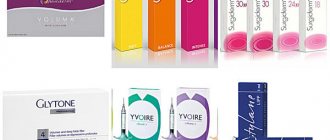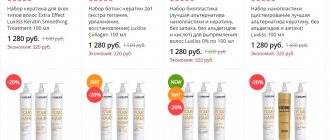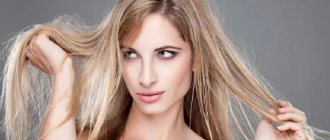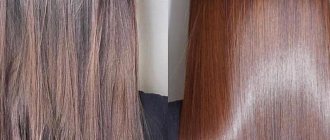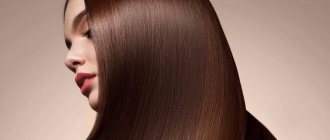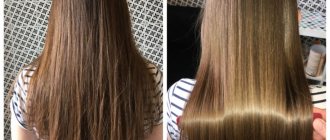Category: Injection cosmetology Published 01/05/2019 · Comments: · Reading time: 8 min · Views: 58,020
Botox facial procedure is a procedure to eliminate wrinkles and hyperhidrosis (excessive sweating). The drug contains botulinum toxin, which leads to blocking of muscles and sebaceous glands. When administering this drug, there are indications and contraindications, and particularities of administration.
What is Botox, the main stages of the procedure
Botox for the face is the general name for medications that are used in cosmetology to eliminate fine wrinkles. These are Botox, Dysport, Relatox, Xeomin, Botulax. The preparations contain botulinum toxin type A. This is a neurotoxin that is synthesized by the bacteria Clostridium Botulinum. When introduced into muscle tissue, it prevents the transmission of nerve impulses - the muscles do not contract, wrinkles disappear.
Stages of botulinum toxin administration:
- Identifying problem areas.
- Preparation, cleansing the skin of cosmetics and dust particles. Even small particles that get into wounds after injections can cause severe inflammatory processes.
- Marking, application of anesthetic gel. Cosmetologists mark the points for insertion. Treats areas with local anesthetic.
- The anesthetic begins to act in 25-30 minutes. During this time, the doctor has time to prepare the instruments and dilute the drug with a 0.9% sodium chloride solution.
- Injection of the drug with an insulin syringe into muscle tissue. The patient needs to tense the appropriate facial muscles.
- Post-treatment of the dermis - treatment with an antiseptic, application of a cold compress.
Botox for the face has a low molecular weight. It affects only the muscle into which the injection is made and does not paralyze neighboring muscles. After administration of the drug, wrinkles disappear, facial expressions are not disturbed.
Discussion
Correction of facial contours using BTA preparations is a very difficult clinical task due to the anatomical and functional complexity of the interaction of the muscles of this aesthetic zone. The most extensive, interesting, but still not fully studied muscle in the lower third of the face is the platysma. From the point of view of classical descriptive anatomy, the platysma is a wide thin muscle covering the lateral surfaces of the neck. It starts from the superficial pectoral and deltoid fascia and ends by intertwining with the periosteum of the mandible, the masticatory fascia, the modiolus and the skin of the cheek, extending in some individuals to the level of the zygomatic arch and the lower edge of the orbit [7, 8]. Anatomical research in recent years indicates that the platysma has wide variability in structure, especially in its facial part, and is an important component of the facial facial apparatus.
The functional role of platysma is still a matter of debate. According to the “classical” concepts, the platysma, together with the DAO, lowers the corner of the mouth and the skin of the cheek [7, 9, 10], working as a single complex with other muscles of the lower third of the face. However, the platysma plays only a minor role in lowering the lip, since this function is provided mainly by two depressor muscles - m. depressor anguli oris and m. depressor labii inferioris [11].
On the other hand, clinically, platysma exhibits a significant facial component. According to a large anatomical study published in 2009 by A. Shah and D. Rosenberg [12], the facial part of the platysma extends 3.98 cm along the malar-mandibular line, occupying about 56% of its length, and sometimes higher. Its contraction leads to lifting of the skin of the neck with contouring of the platysmal cords on the neck and lowering of the skin of the middle third of the face in the lateral areas with accentuation of the nasolabial folds, making it the leading muscle in the emotional expression of surprise [12].
Thus, excessive tone of the platysma does not lead to drooping of the corners of the mouth and aggravation of “marionette lines” due to the fact that its contraction in the upper cervical part under the chin collects and lifts the skin of the neck upward [13], and the facial part simultaneously displaces the skin of the lateral sections face to the sides and downwards, forming multiple thin folds located parallel to the nasolabial fold and going to the contour of the lower jaw, which corresponds to the skin weaving of the platysma [14]. Platysma is a unique muscle with multidirectional activity [13], which, when contracting, contracts and relaxes like the bellows of an accordion, lifting and compressing the skin in the oval area of the face [15]. Like any other facial muscle, the platysma fibers, when contracting, tend to the place of their fixation to the periosteum. Such an area of bone attachment is the edge of the lower jaw, into which a section of the platysma called the pars mandibularis is woven. The more medially located part of the platysma, pars labialis, is woven into the skin of the chin area, partially mixing with the fibers of other facial muscles in this area. Finally, the most lateral portion, constituting the main part of the facial part of the platysma, is called pars modiolaris [16, 17]. It is this section, without bone fixation, that contributes to gravitational ptosis of soft tissues along the oval of the face in its lateral sections [18].
Despite the fact that the facial part of the platysma is quite wide and variable in its structure, the features of its location and morphology are not sufficiently represented in the literature. J. Bae et al. (2016) described in detail the topographic patterns of the course of platysma fibers in the middle and lower parts of the face [19]. They found that there are three options for the direction of the fibers of the facial platysma: straight (38.2%), straight-curved (53%) and curved (8.8%). In patients with straight fibers of the platysma, relaxation of the facial part of the platysma can lead to a noticeable rise in malar fat. This effect is characteristic of patients with excess soft tissue of the face and is called the “fat apple phenomenon” [20]. Typically, the “fat apple phenomenon” resolves spontaneously within 1 month. Since it is impossible to determine the anatomical type of platysma during consultation, the likelihood of such an effect must be discussed in advance with the patient before BTA injection, especially in cases of significant excess soft tissue of the face. However, this phenomenon occurs infrequently: in a study by R. Zhou et al. (2019) of 192 patients who underwent facial oval correction using BTA, the “fat apple phenomenon” was observed in only 3 [20].
The dynamic component of age-related changes in the oval of the face is the result of tonic and repetitive phase activity of the three main facial muscles of the lower third of the face - the mental, DAO and platysma, and they can be activated during voluntary and involuntary facial expressions in various combinations. If platysma plays a leading role in age-related ptosis of the soft tissues of the face, then the main depressor of the corners of the mouth is, of course, DAO. Its repeated contractions and tonic tension, which increases with age, not only contribute to drooping of the corners of the mouth, but, along with stretching of the mandibular ligament and a gradual downward displacement of the lateral superficial fat packets, lead to the formation of a characteristic sagging of soft tissues in this area, the so-called jowls. This process is aggravated by the concomitant contraction of the mandibular part of the platysma located in the same projection, which collects a massive fold, lifting the skin of the neck upward. Another muscle that causes jowl sagging to worsen is the mentalis muscle. By lifting the soft tissue of the chin upward during its contraction, it creates a “twisting” effect, which makes the folds of the skin in the oval area of the face sharper.
When discussing facial patterns of the lower third of the face, it is worth mentioning the work of Brazilian authors [21], in which they presented a new classification of muscle activity in the lower third of the face and neck. This classification is intended to assess the strength and amplitude of DAO contraction and the predominant activity of certain platysma strands. Accordingly, the authors distinguish 4 degrees of DAO activity (0–3) and 4 variants of platysma contractions (no cords, lateral cords, central cords, and total platysma contraction). It is proposed to select a conventional horizontal line passing through the commissures of the mouth as a guideline for assessing DAO activity. If, during the contraction of DAO, this line practically does not shift downwards and passes along the level of closure of the teeth, then this is degree of activity 0, when displaced approximately to the middle of the height of the lower row of teeth - this is 1st degree, at the level of the gum border - 2nd degree and when displacement below the gingival margin - 3rd degree.
As can be seen from the description, this classification is fundamentally different from the one we propose. It is convenient for a “semi-quantitative” assessment of the activity of a specific muscle (DAO) and indicating the predominant portion of the platysma, but does not provide an idea of the facial pattern and interaction of muscles during facial activity in the lower third of the face. The closest analogue of our classification is the well-known classification of facial glabella patterns by A. De Almeida et al. (2012) [22], since it deals with the facial pattern of a specific aesthetic zone, formed as a result of the interaction of several muscles, and not individual variations in contraction or the anatomical structure of a single specific muscle.
Our analysis showed that in the overwhelming majority (81.6%) of cases, platysma is involved in the facial activity of the lower third of the face. It is interesting that an isolated reduction in platysma during voluntary (in a facial expression test) and involuntary facial expressions with contouring of cords was observed mainly in the older age group (over 50 years old) and did not occur at all in patients under 30 years old. And in general, platysma activity was recorded in the youngest age cohort much less frequently (61.1%) than in the entire group of patients examined. This is consistent with the data that an increase in platysma tone with the formation of cords is observed in individuals over 55 years of age, i.e. much later than the manifestations of aging of other facial zones, for example the periorbital [7].
It should be noted that the involvement of the mentalis muscle in the facial activity of the lower third of the face occurred only in approximately every 4th (26.1%) patient. The mentalis muscle is interesting because it has close functional and anatomical interactions with the orbicularis oris muscle and the depressor labii inferioris, playing an important role in lower lip movement and articulation [23]. Turning off the activity of the mentalis muscle using BTA injections has long been used by specialists to eliminate tonic tension of the chin with characteristic retractions (“cobblestone” chin) and give the facial contour a more elongated and pointed appearance. On the other hand, such injections are associated with the risk of unwanted spread of the toxin into the neighboring muscle - the depressor of the lower lip - with the formation of smile asymmetry, as well as some discomfort for the patient associated with relaxation of the mental muscle itself (impaired clarity of articulation). In this regard, when correcting the contours of the oval of the face with botulinum toxin, it may not always be necessary to inject the drug into the mentalis muscle, but only in cases where it clearly demonstrates its increased activity. This reduces the risk of adverse events and makes the procedure much more comfortable for patients.
In contrast, depressors anguli oris (DAO) are extremely active muscles. In young patients, they can completely take on the function of shifting the skin of the lower third of the face downward without involving the platysma, which we observed as an isolated variant of the facial pattern in 1/3 (33.3%) of young patients. However, isolated injection into only these muscles will typically result in subsequent activation of the platysma (Figure 5) . Thus, even with an isolated facial pattern, botulinum toxin should be injected not only into the DAO, but also into the corresponding section of the platysma.
Rice. 5. Activation of platysma bands after isolated DAO correction.
The most famous and widely used technique for correcting facial contours, which involves the joint relaxation of DAO and platysma, is, of course, the “Nefertiti lifting”, described in 2007 by P. Levy [24]. The author used OnaBTA in his work. According to the injection scheme, the drug is injected 2-3 units subcutaneously into one point in the DAO, several (up to 4) points along the contour of the lower jaw and into 2 points of the upper part of the posterior platysma cord. The total dose of the drug in this case is 15-20 units on each side. This correction scheme gives excellent results in patients with isolated and concomitant variants of the facial pattern, but is insufficient or ineffective for platysmal, combined and antagonistic variants.
A more advanced technique was presented by A. De Almeida et al. (2017) [17]. Based on the latest anatomical studies of the platysma, they proposed injecting BTA to correct facial contours not only in the DAO, but also in the mentalis muscle, and placing the drug injection points into the platysma along two lines, one of which is located above the contour of the lower jaw (2 points) , and the second - 2 cm below it in increments of approximately 2 cm up to the level of the mandibular angle (4 points). It is recommended to inject 2 U of OnaBTA into each point, but in some cases the dose of the drug can be increased to 2.5-3 U. Injections into the mental muscle are carried out deeply intramuscularly, at other points - superficially subcutaneously. The total dose is 14-18 units on each side.
The “three-level” technique we propose is a continuation of the concept proposed by A. De Almeida, but has its own characteristics.
First, as mentioned above, injections into the mentalis muscle are performed only in the case of an antagonistic or combined pattern (27 out of 48 patients). In contrast to the platysma, we did not observe any compensatory activation of this muscle in cases where it remained intact during the procedure.
Secondly, the second level of injection into the platysma is determined by a specific anatomical landmark - the line of the cervical-mental angle. It corresponds to the uppermost cervical groove and the level of attachment of the platysma to the hyoid bone through the cervicomental suspensory ligament [25]. Increased tone of the platysma in this area leads to smoothing of the cervical-mental angle [20], and with the help of BTA injection, the angle can be made clearer.
Thirdly, our clinical experience shows that for effective lifting of the facial oval, sometimes only two levels of BTA injection into the platysma are not enough. Therefore, we added another, third level of BTA injections, corresponding to the cervicofacial angle and the very first distinct cervical groove.
Finally, fourthly, the choice of injection points is determined by the intersection of the vertically oriented strands with the horizontal lines of the neck, which serve as “assembly points” of the skin during platysma contraction. This “three-level” correction technique, taking into account the facial pattern, allows you to individualize the tactics of working with the patient and reduce the risks of adverse events.
Quite recently, a small publication appeared that describes and anatomically substantiates the BTA injection technique, aimed primarily at accentuation of the mandibular angle [26]. The authors suggest introducing BTA into the most posterior areas of the platysma, which pass behind the angle of the mandible in 95-100% of cases, covering the lower third of the masseter muscle [19, 27]. The first point is marked 2 cm downward from the angle of the lower jaw, the second - 2 cm anterior to the first point, and the third - 2 cm posterior and upward. 2-3 units of 100-unit BTA are injected into each point (in the publication the authors used OnaBTA). This technique can be used as a complement to the “Nefertiti lift” if the patient wants not only to tighten the oval of the face, but also to emphasize the angle of the lower jaw [26].
In publications by Asian authors, correction of facial contours using BTA usually also involves injections into the masticatory muscles, since their hypertrophy, along with an expanded lower jaw, is quite common among representatives of the Mongoloid race [6]. For patients with a square face shape, moderate soft tissue ptosis and a tucked chin R. Zhou et al. (2017) proposed a “three-dimensional” correction method [28], which involves “reducing” (Reduction) the volume of the masticatory muscles, and therefore the width of the face as a whole; “Projection” - relaxation of the mental muscle with the formation of a more pointed and clearly defined chin and “lifting” of the soft tissues of the face due to relaxation of the facial part of the platysma. The authors used OnaBTA in their work and recommend the following administration regimen: mental muscles - 4 units deep intramuscularly at one point on each side; DAO - 1-2 units per point on each side, superficially subcutaneous; facial part of the platysma - at 5-7 points on each side with an interval of 1.5 cm, 2-2.5 units per point, subcutaneously; finally, into the masticatory muscles - deep intramuscularly at 3 points on each side, located in the form of an isosceles triangle - 25 units to the point corresponding to the apex of the triangle, and 5 units to the points located at the base of the triangle, along the edge of the lower jaw [28 ].
When discussing various approaches to correcting facial contours using BTA, one cannot fail to mention a fundamentally different approach, which was also first used by our Asian colleagues and has become widespread not only for the correction of aesthetic imperfections, but also for such “non-standard” areas of application of BTA as treatment of rosacea, hot flashes, etc. [29]. We are talking about multiple intradermal injections of BTA, reconstituted with a volume of solvent 2-3 times greater than usually recommended. By analogy with mesotherapy, the technique was called “mesotoxin”.
For the correction of facial contours and neck contours, it was first proposed by W. Wu (2015) under the name “microbotox” [30]. The technique involves multiple microdroplet injections of a low-concentrated BTA solution into the dermis or superficially subdermal, with injection points evenly distributed over the entire area of the platysmal muscle, including both its facial and cervical parts. It is important to note that in this case we are not talking about reducing the total dose, but only about its distribution: the total dose for correcting platysma is not less than that usually recommended in the “classical” method (154 U of AboBTA at a dilution of 70 U/ml). Superficial injection of small volumes prevents unwanted diffusion of the solution into deeper muscles, thus maintaining a natural appearance and preventing unwanted reactions.
A very interesting work was published by C. Awaida et al. (2018) [31], in which they compared the “Nefertiti lifting” technique by P. Levy with the “mesotoxin” technique by W. Wu. The work is noteworthy in that the same patients took part in it; they first underwent facial contour correction using the “Nefertiti lifting” technique, and then, 8 months later, after complete regression of the result of this correction, repeated correction was carried out using the “mesotoxin” technique. As in the work of W. Wu, AboBTXA was used at an average dose of 154 U. The results of the study showed that for the correction of facial contour and neck volume, the “mesotoxin” technique is more effective, while for the correction of platysma bands, the results of the “Nefertiti lifting” technique are more demonstrative [31].
A detailed consideration and individualization of the mesotoxin technique was proposed in the recent work of R. Zhou et al. (2019) [20]. The authors propose planning a correction scheme depending on the indications of each individual patient (Table 2, Fig. 6) . In this case, the platysma area is divided into three zones: facial (V1), submental (V2) and cervical (V3).
Table 2. Correction zones and doses of the drug depending on the degree of ptosis of the middle/lower third of the face (diagram and table are presented based on the article) [20]
| Parameter | Degree of ptosis | ||
| initial facial ptosis | moderate facial ptosis | moderate ptosis of the face and neck | |
| Characteristic | Slight overhang of nasolabial folds and marionette lines and a sharp cervicomental angle | Moderate overhang of nasolabial folds and marionette lines and smoothness of the cervical-mental angle | Deep nasolabial folds and marionette lines, obtuse cervical-mental angle |
| Correction zone/dose of the drug* | V1/20—30 Units | V1 + V2/20-30 Units + 10-15 Units | V1 + V2 + V3/20-30 Units + 10-15 Units + 20-40 Units |
Note. * - total on both sides; zone V2 - total dose of the drug per zone.
Rice. 6. Platysma zoning (diagram).
Thus, today there are many different approaches to correcting the oval of the face, and all of them consider the facial and, in some cases, the cervical part of the platysma as a central and obligatory component. Depending on the severity of age-related changes and the predominance of activity of a particular muscle, a specialist can choose the most appropriate technique, and assessing the facial pattern of a particular patient will always be useful.
Brief characteristics of drugs for botulinum therapy
Products based on botulinum toxin differ in the number of molecules, additives in the composition, and price. The most popular drug, American Botox, appeared at the end of the 20th century. Auxiliary ingredients: sodium chloride, albumin.
Dysport is a French drug that is similar in effect to Botox. But the composition does not contain lactose and hemagglutinin, the toxin concentration is 50 units. The Russian analogue is Relatox. Additional ingredients include gelatin and maltose, which are necessary for additional stability of the main component. There is no albumin in the composition, so the antigenic load is minimal.
Xeomin is a German remedy. It works even with small muscles, since it has a low molecular weight. The composition contains virtually no aggressive proteins, which reduces the risk of allergic reactions. Botulax is a drug from Korea, identical in composition to Botox. But it acts softer and more painlessly, the effect appears a few hours after the injection.
Which areas can be corrected with Botox?
Botox for face
Botulinum therapy is used to eliminate facial wrinkles in various areas of the face and neck. Most often this is the forehead, décolleté and lower eyelid area, and the area between the eyebrows. The injections help eliminate crow's feet and purse-string wrinkles around the mouth.
In addition to fighting wrinkles and creases, Botox helps get rid of other defects:
- raise the corners of the mouth;
- remove a gingival smile, in which the gums are exposed;
- relax the masticatory muscles, after eliminating hypertonicity, the face becomes more harmonious;
- get rid of the drooping eyelid, raise your eyebrows - your gaze becomes open and expressive;
- eliminate minor facial asymmetry caused by blepharospasm and other spastic disorders;
- narrow the tip of the nose, raise the tip;
- visually lengthen your chin.
In cosmetology, botulinum toxin is used not only to eliminate age-related changes. Injections into the armpits, feet and palms are given for excessive sweating (hyperhidrosis).
Maintaining
Despite the popularity of botulinum therapy for the lower third of the face and neck, there are still no clear registered recommendations and indications for most botulinum toxin type A (BTA) preparations. In Russia, injections into the muscles of the lower third of the face with recommended dosages are indicated in the instructions for use for aesthetic indications only for the drugs Lantox (depressor anguli oris - DAO, face oval lifting, platysma bands, laughter lines, relief of the anterior surface of the neck) and Relatox (DAO, mentalis muscle) (see Instructions for use of drugs). Nevertheless, both in the domestic and international literature there are a huge number of articles describing the experience of using BTA drugs for the correction of facial contours and platysma bands. There are developed international and national consensuses [1-5] from different countries with detailed recommendations for working with this aesthetic zone. One of the reasons why these indications are still not included in the instructions for use of the “big three” BTA drugs - OnaBTA (Botox), AboBTA (Dysport) and IncoBTA (Xeomin) is poor reproducibility and predictability of the results achieved, and there is also a higher risk of adverse events than in the upper third of the face. Although in the vast majority of cases these undesirable phenomena do not cause any harm to health, their aesthetic unsightliness (asymmetry of the mouth at rest or when moving the lips) and functional discomfort (difficulty in articulation, holding fluid in the mouth, etc.) require correction facial contour is a more risky manipulation than standard botulinum therapy for the upper third of the face.
The target muscles for aesthetic correction of facial oval using BTA are DAO, mentalis muscle and platysma muscle. In the case of hypertrophy of the masticatory muscles, devolumization of these muscles can also be included in the correction plan. This scheme is especially popular in Asian countries, where traditionally square-shaped faces with increased volumes of masticatory muscles are quite common [6].
The purpose of the study is to present an original classification of facial expression patterns of the lower third of the face and a technique for correcting facial oval using BTA preparations.
How long does it take for Botox to work and how long does it last?
The first result is noticeable after 2-3 hours. After 3-7 days, the effect is noticeably visible visually. The final result is in 2 weeks.
Botulinum toxin lasts 4-6 months. As muscle and nerve fibers are restored, the effect of the injections is leveled out, and wrinkles gradually return. After six months, you can repeat the procedure.
After several courses of botulinum therapy, tolerance to the toxin develops. To achieve the desired result, a larger amount of the drug will be required, the action time will be reduced by 1.5-2 times. To restore the body's sensitivity, you must refrain from injections for 12 months.
results
Assessment of facial patterns of the lower third of the face
When analyzing the facial pattern reflecting the contraction of the muscles of the lower third of the face, 5 different options were identified (Fig. 2) :
— isolated abbreviation DAO (“isolated pattern”);
- isolated contraction of platysma (“platysmal pattern”);
— friendly abbreviation of DAO and platism (“friendly pattern”);
- multidirectional contraction of the mentalis muscle and DAO (“antagonistic pattern”);
- simultaneous activation of all three muscles - DAO, mentalis and platysma (“combined pattern”).
Rice. 2. Photographs of patients with different variants of the facial pattern of the lower third of the face .
Among all patients, 14.5% had an isolated pattern, 36.2% had a concomitant pattern, 24.2% had a platysmal pattern, 21.2% had a combined pattern, and 3.9% had an antagonistic pattern. When analyzing the distribution of facial patterns within age groups, it was found that in the youngest group (20-30 years old) not a single platysmal variant of the pattern was registered. At the same time, an isolated variant, in which only DAO is activated, occurred in every 3rd (33.3%) patient. On the contrary, in the oldest age group (50 years and older) there were no patients with an isolated variant of the facial pattern, but the platysmal variant was more common than others - in 46.5% of cases (Fig. 3) .
Rice. 3. Frequency of occurrence of facial expression patterns in the lower third of the face.
Correction of facial oval
Correction of facial contours was performed on 48 patients aged from 34 to 67 years (average age 48±3.4 years). Doses of AboBTA and target muscles for botulinum therapy are indicated in Table. 1 .
Table 1. Doses of AboBTA and target muscles for correction of facial contours using the “three-level” technique
| Total number of patients | Facial pattern (number of patients) | Target muscles for AboBTA injections | Total dose of AboBTA |
| 27 | Combined (20); anatagonistic (7) | Mentalis muscle + DAO + platysma | 68-106 (average - 80) |
| 12 | Friendly (8); isolated (4) | DAO + platism | 50-88 (average - 76) |
| 9 | Platysmal (9) | Platism | 48-84 (average - 54) |
A comparative analysis of photographs before and 14-18 days after the procedure showed an improvement in appearance in all patients. On the GAIS scale, satisfaction with the results of the procedure was 2.8 points as assessed by the doctor and 2.6 points as assessed by the patients (Fig. 4) .
Rice. 4. Photographs of patients before and 14 days after BTA-lifting of the facial contour using a “three-level” technique.
a — friendly pattern; doses of AboBTA (68 units in total): DAO 6 units on each side, facial part of the platysma 10 units on each side, cervical part of the platysma - 20 units on the right, 16 units on the left; b — platysmal pattern; AboBTA doses (total 50 units): DAO 4 units on each side, facial part of the platysma 4 units on each side, cervical part of the platysma - 18 units on the right and 16 units on the left; c — combined pattern; doses of AboBTA (72 units in total): mentalis muscle - 5+2 units on the right and 5 units on the left, DAO - 5 units on the right and 5+2 units on the left, facial part of the platysma - 8 units on each side, cervical part of the platysma - 16 units Food on each side.
The most obvious result was an improvement in the contours of the face and upper half of the neck in facial expression tests and involuntary facial expressions. In addition, 32 (66.7%) patients noted that their face after correction looked more “compact”, toned, and the contour of the oval of the face was clearer. In patients over 50 years of age, there was also a noticeable smoothing of dynamic wrinkles formed during a facial test or an active smile, located parallel and lateral to the marionette wrinkles and nasolabial folds (“smile echo” wrinkles) (see Fig. 4, b) .
There were no serious adverse events such as overt mouth asymmetry, articulation disorders, dysphagia, or voice changes in any case. During an active facial test, 3 patients showed slight asymmetry of the lower lip, probably associated with trace amounts of BTA entering the depressor of the lower lip. Correction of this undesirable phenomenon was not required, since the patients did not notice this asymmetry in everyday life and it did not bother them. In 7 cases, additional repeated administration of AboBTA at a dose of 8-12 units was required to correct the residual activity of the platysma bands.
When surveyed during the follow-up visit, 45 of the 48 patients expressed a desire to repeat a similar procedure in the future. The remaining 3 patients assessed the achieved correction result as insignificant, so they did not plan to repeat the procedure in the future.
How much drug should be administered
Botulinum toxin is measured in units of action (AU). This unit of measurement shows the biological activity of a substance. Determines the amount of drug required to block nerve endings.
When calculating, the age and condition of the patient’s skin, the depth of wrinkles, and the treatment area are taken into account. The doctor determines the activity of facial muscles and the condition of muscle tissue.
Average doses of botulinum toxin for different zones (in units):
- between the eyebrows - 10-25;
- wrinkles in the eye area - 5-15;
- folds on the neck - 20-60;
- wrinkles on the forehead - 10-15;
- purse-string wrinkles - 2-5.
When using the toxin for the first time, minimal doses are administered to avoid a mask effect after the procedure.
Botox for face
Cryolipolysis
Zimmermann show spring-summer 2022 Excellent for reducing the volume of local fat deposits. Controlled cooling can reduce the number of fat cells in the body. Typically, after one cryolipolysis procedure, the effect occurs after an average of three months - the patient decreases by one size in the treated area. And in patients with slow metabolic processes due to hormonal changes, this result, for example, occurs after four to five months. However, if it is not observed after three to four months, then we can assume that there will be no effect.
Expert opinion
Anastasia Aleksandrovna Karamysheva, physiotherapist, nutritionist, figure correction specialist, chief physician of the SM-Cosmetology clinic “The lack of effect after cryolipolysis may be due to the fact that the patient simply did not change his diet.
The supply of excess energy resources from food continues. The remaining fat cells continue to increase their volume." Slightly less often, the lack of effect is associated with disorders in the body that lead to a slowdown in metabolism. These may be diseases of the thyroid gland, among which one of the most common is hypothyroidism, that is, decreased function of the thyroid gland. The same effect can be caused by dysfunction of sex hormones or metabolic syndrome, which causes obesity.
What to do to make cryolipolysis work
It is imperative to undergo a check up before the procedure, which includes a set of tests that will help identify possible metabolic disorders and minimize the risk that the patient will undergo the procedure without results. It is also imperative to adjust your lifestyle, in particular nutrition, and add physical activity. It is important to do this long before the procedure, so that rational nutrition and exercise become a habit.
Restrictions on what not to do after the procedure
Botulinum therapy is an effective and popular procedure, but it is not suitable for everyone. Before visiting a cosmetologist, you must undergo an examination.
Restrictions:
- period of pregnancy and breastfeeding;
- allergic reactions to protein substances;
- increased sensitivity to components;
- exacerbation of chronic diseases, infectious pathologies in the acute stage, respiratory infections, fever;
- inflammation, violation of the integrity of the skin at the injection sites;
- severe forms of myopia;
- oncological pathologies;
- taking antibiotics, drugs that increase the concentration of calcium inside cells;
- significant hernias of the upper and lower eyelids.
To avoid the development of negative consequences, after botulinum toxin injections, you should not take a horizontal position for 3-4 hours. In the first days, you should not rub the injection sites, use care products or cosmetics. You can visit the bathhouse, solarium, swimming pool, or actively engage in sports a week after the procedure. Avoid drinking alcohol, coffee, salty and spicy foods for 7-10 days.
Advantages and disadvantages
The results of injections with botulinum toxin are noticeable almost immediately. The procedures are safe because the toxin is administered in minimal doses. If all rules are followed, muscle mobility is not impaired. After the toxin has completed its effect, the oval of the face does not float and returns to a position that corresponds to age.
The injections are given intramuscularly and are therefore painless. But if the pain threshold is low, the cosmetologist applies a gel with an anesthetic to the skin. On average, the procedure lasts 10 minutes.
Botulinum toxin can be combined with hyaluronic acid fillers. When correcting different zones - simultaneously. If it is necessary to eliminate wrinkles in one area, Botox is first injected, after 3 weeks injections with hyaluronic acid are made.
Disadvantages of botulinum therapy:
- short-term action;
- presence of restrictions;
- Some people are immune to Botox due to previous illnesses or genetic factors.
Botulinum toxin can be injected at any age to eliminate wrinkles and deep folds on the face and neck. But if the procedure is performed for the first time after 55-60 years, compensatory hypertonicity may develop. Therefore, the cosmetologist must take into account the individual characteristics of each patient and all restrictions.
Material and methods
Assessment of facial patterns of the lower third of the face
The prospective observational study included 134 patients (124 women and 10 men) who came to the Chistye Prudy Center for consultation and aesthetic correction for various indications from September to December 2015.
Inclusion criteria were the absence of BTA injections in at least the previous 8 months, the absence of obvious facial asymmetry, scar changes, diseases or their consequences that impair facial expressions. During the consultation, patients' faces were assessed at rest and in facial expressions, and a card was filled out, in which the facial muscles involved in standard facial expression tests were noted. In particular, in the lower third of the face, the involvement of the DAO, mentalis muscle and platysma was assessed during a facial test (actively pronouncing the letter “Y”) and involuntary facial expressions (during a conversation).
All patients were divided into groups by age: group 1 (from 20 to 30 years) - 18 patients (2 men and 16 women); Group 2 (from 31 to 40 years) - 44 patients (3 men and 41 women); Group 3 (from 41 to 50 years) - 44 patients (3 men and 41 women); Group 4 (51 years and older) - 28 patients (2 men and 26 women).
“Three-level” BTA method for facial oval correction
48 women underwent facial oval correction using an original technique (“three-level” BTA method for facial oval correction). Patients with moderate sagging of the facial oval, the absence of excess fatty tissue, and without any previous injection or hardware procedures aimed at strengthening the oval of the face over the past 6 months were selected for correction. All patients underwent standard photography at rest and during facial expression tests before correction and 14-18 days after BTA injections. Patients were warned to report to the physician any adverse events, facial asymmetry, sensory disturbances, or other discomfort if they occurred after the procedure.
The analysis of the results was carried out by comparing each pair of photographs (at rest and during the facial test) in points according to the Global Aesthetic Improvement Scale (GAIS), where −1 is deterioration; 0 - no result; 1 - slight improvement; 2 - clear improvement; 3 - noticeable improvement. The assessment was carried out by the doctor and the patients themselves. The main criterion assessed was improvement of facial contours. Patients were also asked whether they would be willing to repeat the treatment (“yes” or “no”). If necessary, during the follow-up visit, adjustments were made with additional administration of BTA.
Description of correction technique
AboBTA was used for botulinum therapy. A vial containing 300 U of AboBTA was reconstituted with 1.5 ml saline. Injections were carried out in the DAO and platysma on both sides, superficially subcutaneously, 4-5 U at each injection point. If there was initial hyperactivity or tonic tension of the mental muscle, additional deep intramuscular injections were performed at a dose of 5-10 U on both sides. In addition, in some patients, small doses (2-2.5 U) of AboBTA were additionally administered superficially intradermally in places of superficial active skin retraction (in the chin area - “cobblestone chin”, in the upper part of the DAO, along the platysma, between the main points injections that were located above the projection of the platysma cords) (Fig. 1) . In the absence of involvement of the mentalis muscle and DAO in involuntary facial activity, injections were performed only in the platysmal muscle. The choice of injection points and doses of the drug was carried out taking into account individual characteristics: in the case of existing functional asymmetry in the contractile function of the facial muscles, the doses of the drug administered to the right and left halves of the face could differ from each other.
Rice. 1. Scheme of three-level correction of facial oval.
The points in the cervical part of the platysma are located at the intersection of the platysma strands with the cervical skin folds. Black dot - deep intramuscular injection into the mentalis muscle, 5-10 units on each side, white dots - 4-5 units, superficially, subcutaneously in the DAO and platysma, small transparent dots - optional points of superficial intra-/subcutaneous injection, 2-2 each .5 U (doses indicated for AboBTA).
Injections were performed at three levels, or “floors”:
— 1st level — injections above the contour of the jaw, into the mentalis muscle, DAO and the facial part of the platysma;
— 2nd level — injections below the mandibular contour, along the conditional line of the cervical-mental angle. AboBTA was inserted into the middle of the contractile cord corresponding to the anterior edge, as well as into the cord that attaches to the mandible under the DAO insertion site. If, with active tension of the platysma, the cord corresponding to its posterior edge was contoured, then AboBTA was also injected into it at a dose of 4-5 U;
- 3rd level (lowest) - the intersection points of the same platysma strands and the first cervical groove. 4-5 U of AboBTA were also injected into these points, except for the most anterior point - a half dose of the drug (2-2.5 U) was injected into it to avoid the risk of unwanted diffusion of the drug into the laryngeal muscles.

